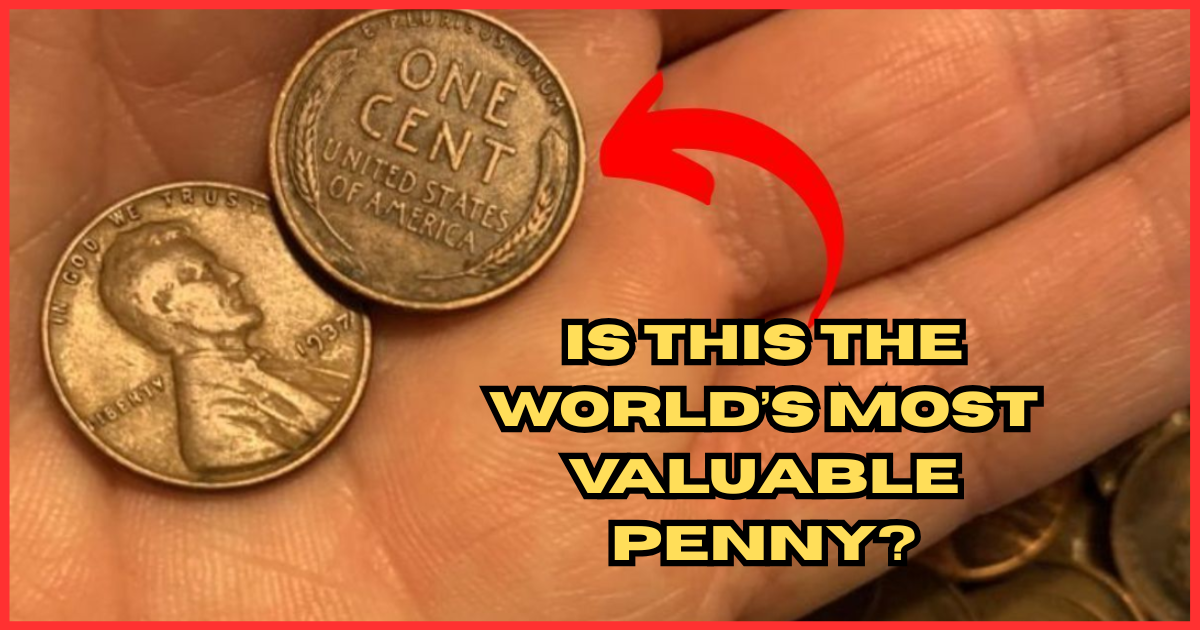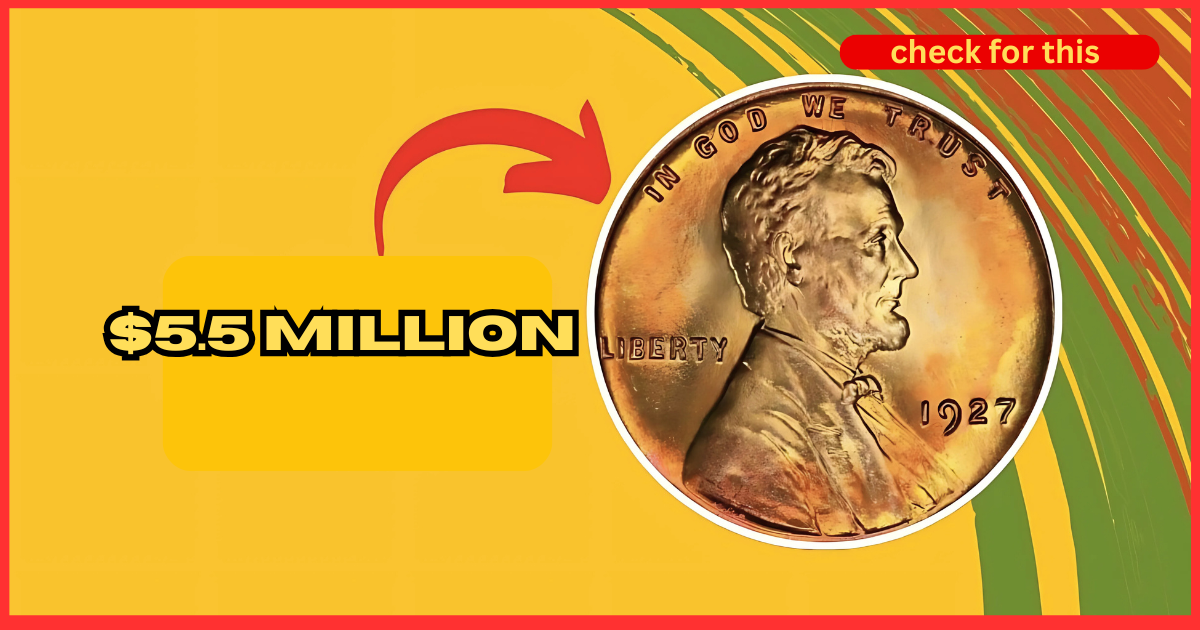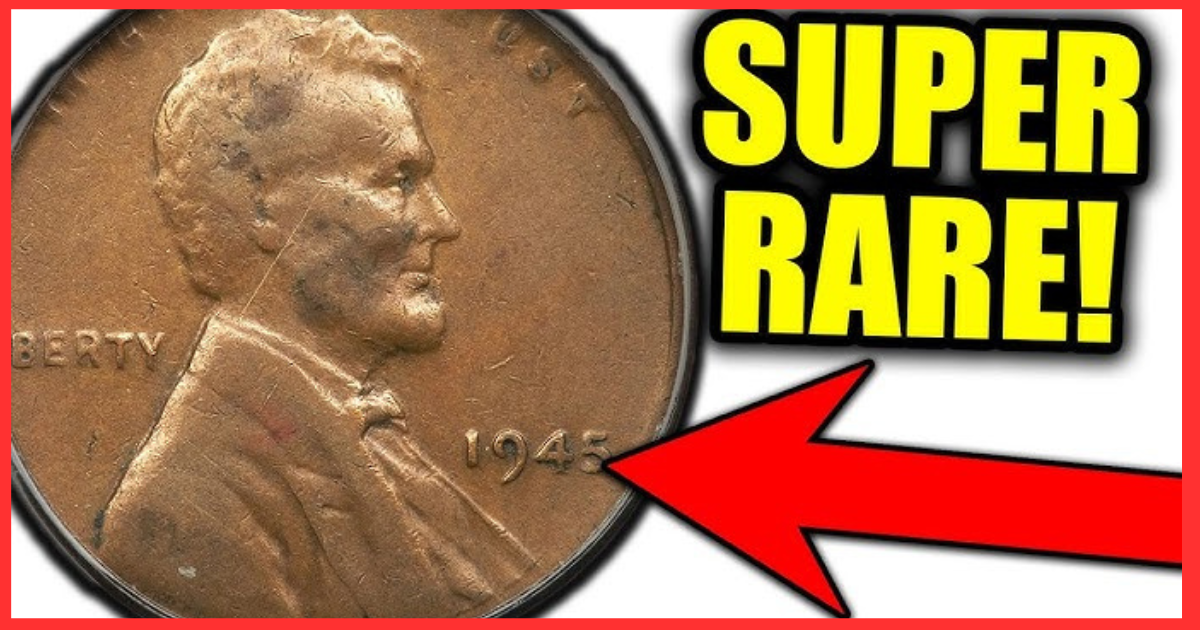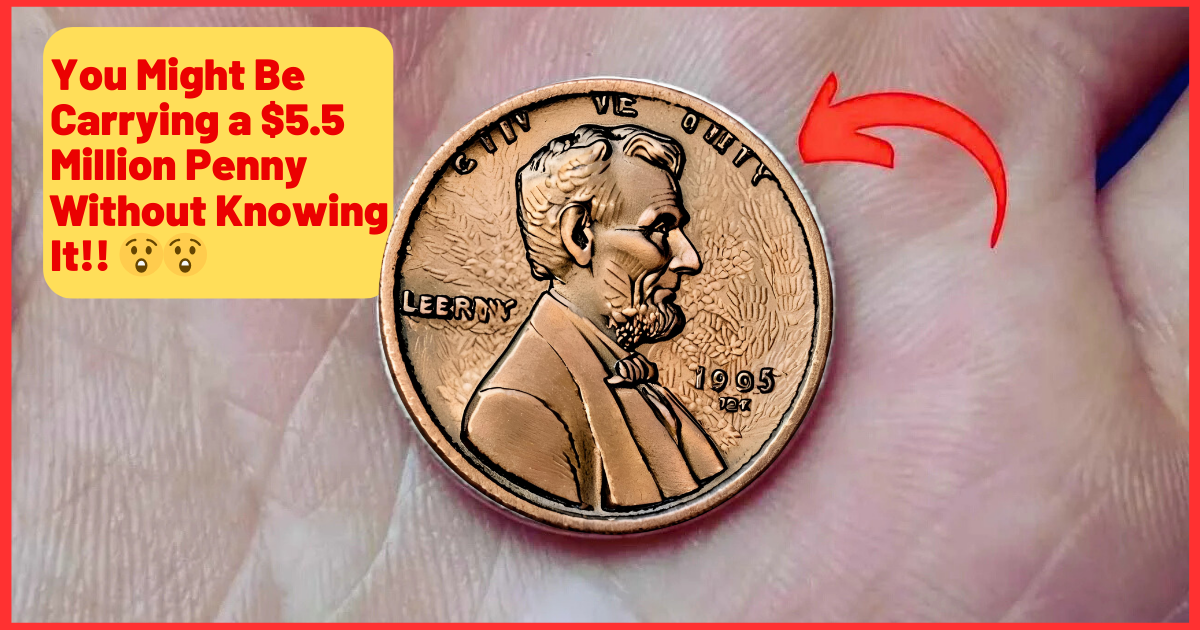Believe it or not, some rare versions of the Lincoln Wheat Penny are valued at $6 billion amount. This humble coin has turned casual collectors into millionaires overnight—and it could be hiding in your change jar right now.
Let’s dive into why this little piece of history is so valuable and how you can spot one before it slips through your fingers.
The Lincoln Wheat Penny is a very valuable coin in the United States. Some versions sell for millions of dollars.
This coin was first made in 1909 to honor President Abraham Lincoln’s 100th birthday. It was designed by Victor David Brenner.
Its value comes from its rarity, historical importance, and condition. This makes it very popular among collectors.
Some valuable coins from the Lincoln Wheat Penny series are still being used. Many people wonder if they might have a fortune in their pockets.
What is the Lincoln Wheat Penny?
The Lincoln Wheat Penny has a rich history, starting in 1909. It’s a symbol of America, designed by Victor David Brenner. He was a skilled sculptor and engraver.
The Lincoln Wheat Penny’s design shows President Abraham Lincoln on one side. The other side has two stalks of wheat. This design honors America’s farming roots.
The minting process for this penny changed over time. At first, it was made from bronze. But during World War II, it was made from other metals because of shortages.
Knowing the Lincoln Wheat Penny history and its design is key. It was made from 1909 to 1958. This makes it a cherished part of American coin history.
Why is the Lincoln Wheat Penny So Special?
The Lincoln Wheat Penny is more than a coin; it’s a piece of American history. It has captured collectors’ hearts for generations. Its cultural significance comes from being the first coin to feature a real person, President Abraham Lincoln.
The coin’s collectibility comes from its rarity and condition. Collectors look for specific years, like the 1909-S VDB, which are rare. The coin’s condition, like if it’s circulated, also matters a lot.
- The historical significance of the Lincoln Wheat Penny makes it popular among collectors.
- Its unique design, with wheat stalks on the back, makes it appealing.
- The coin’s age and minting during a significant time in American history add to its value.
The Lincoln Wheat Penny’s cultural significance goes beyond its monetary value. It connects us to the past. This makes collectors pay more for rare and well-preserved coins, increasing demand.
In summary, the Lincoln Wheat Penny is special because of its historical importance, unique design, and collectibility factors. Whether you’re a seasoned collector or new, this coin is a fascinating piece of American history to explore.
Common Variants of the Lincoln Wheat Penny
The Lincoln Wheat Penny has several notable variants that collectors seek. These variants are highly valued for their unique characteristics and rarity.
Two of the most significant variants are the 1909-S V.D.B. Coin and the 1955 Double Die Obverse. The 1909-S V.D.B. Coin is rare, with only a few hundred minted. This makes it highly valuable among collectors.
The 1955 Double Die Obverse is also highly sought after. Its unique design, caused by a minting error, makes it stand out. This error doubles the date and lettering, giving the coin its distinct look.
Some other notable variants include:
- The 1914-D Lincoln Wheat Penny, known for its low mintage.
- The 1922-D Lincoln Wheat Penny, which is recognized for its ‘No D’ mint mark error.
- The 1931-S Lincoln Wheat Penny, another coin with a low mintage that adds to its value.
These variants are highly prized by collectors for their rarity and historical significance. Understanding the differences and characteristics of these variants is crucial for both collectors and enthusiasts.
How to Identify Genuine Lincoln Wheat Pennies
Genuine Lincoln Wheat Pennies can be told apart from fakes by looking at certain features. For coin collectors, it’s key to make sure these coins are real.
To spot a real Lincoln Wheat Penny, first check the date and mint mark. The date is on the front of the coin. The mint mark, if there is one, is below the date. Different mints made these pennies, and the mint mark shows where it was made.
Another important thing is the coin’s condition. The condition can change the coin’s value and if it’s real. Coin collectors should look for wear and tear like scratches or discoloration. A magnifying glass can help see these details better.
- Examine the coin’s edges for signs of tampering or wear.
- Check the coin’s weight and diameter to ensure it matches the standard specifications.
- Use a coin album or folder to store and protect your coins.
By looking at these key features and using the right tools, coin collectors can be sure they have genuine coins. This helps them build a valuable collection.
The Value of Lincoln Wheat Pennies
The value of Lincoln Wheat Pennies depends on their condition, rarity, and demand. Prices can vary from a few cents for common ones to millions for rare ones.
To find the current prices, check online platforms and coin dealer networks. Keeping up with market trends is key to knowing a coin’s value.
Several factors influence the value of Lincoln Wheat Pennies. It’s important for collectors and enthusiasts to understand these:
- Rarity: The fewer coins minted, the rarer and more valuable they are.
- Condition: Coins in good condition, with little wear, are worth more.
- Demand: The interest from collectors can greatly affect a coin’s value.
| Factor | Description | Impact on Value |
|---|---|---|
| Rarity | Limited mintage numbers | Increases value |
| Condition | State of preservation | Better condition = higher value |
| Demand | Collector interest | Higher demand = higher value |
By knowing these factors and staying updated on prices, collectors can make smart choices about their collections.
Tips for Collecting Lincoln Wheat Pennies
For those new to coin collecting, the Lincoln Wheat Penny is a great starting point. Its rich history and varied designs make it fascinating. It’s a wonderful addition to any numismatic collection.
To start collecting Lincoln Wheat Pennies, first learn about the coin’s history, rarity, and value. Knowing about mint marks, conditions, and errors can greatly affect its worth.
Key Considerations for Collectors:
- Research the history and significance of the Lincoln Wheat Penny.
- Understand the factors that affect the coin’s value, such as condition and rarity.
- Utilize resources like online forums, coin dealers, and numismatic organizations to expand your knowledge.
Start by buying a few coins and storing them in a coin album or folder. This helps organize your collection and keeps the coins in good shape.
| Resource | Description | Benefit |
|---|---|---|
| Online Forums | Platforms where collectors share knowledge and experiences. | Gain insights from seasoned collectors and learn about new coins. |
| Coin Dealers | Experts who buy and sell coins, offering authentication and grading services. | Ensure the authenticity and quality of your coins. |
| Numismatic Organizations | Groups dedicated to the study and preservation of coins. | Access educational materials, events, and networking opportunities. |
By following these tips and using the available resources, collectors can build a valuable Lincoln Wheat Penny collection.
Why It’s So Valuable
The 1943 bronze penny is rare and has a fascinating story. During World War II, copper was used for bullets, so pennies were made of steel. But, by mistake, some bronze blanks were mixed in, making them very valuable.
Recently, similar coins have sold for millions. The estimated value of a perfect penny is $6 billion. Collectors love these coins for their historical significance. The condition greatly affects the price.
Don’t clean a penny if you find one. Cleaning can lower its value. Keeping it in its original state is best.
How to Spot the Prize
Could your penny be worth $6 billion? Here’s how to find out. Check for the 1943 date and a bronze color. It should not be silver or steel.
A magnet test is crucial. Steel pennies stick to magnets, but bronze ones don’t. The back should have wheat stalks around “ONE CENT.”
Be careful of fakes. Some people coat steel pennies with copper to trick others. If you think you have a real one, get it checked by a coin expert.
Trustworthy dealers or services like the Professional Coin Grading Service (PCGS) can confirm its authenticity.
Popular Myths About Lincoln Wheat Pennies
Many people think every Lincoln Wheat Penny is rare and valuable. But this isn’t true. While some are very valuable, many are common and can be found easily.
Common Myths and Misconceptions
- One big myth is that all Lincoln Wheat Pennies are rare and worth a lot. But, they were made from 1909 to 1958, with millions made. This makes many of them common.
- Some think the coin’s condition is the only thing that matters. But, other things like how rare it is, its mint mark, and its history also count.
- Collectors often believe that coins with errors are always valuable. But, the value of error coins depends on the type of error, how visible it is, and the coin’s condition.
Historical Anecdotes
Despite the myths, there are many interesting stories about the Lincoln Wheat Penny. For example, some collectors found rare Wheat Pennies in their change jars. These stories show the excitement of searching for these coins and their rich history.
The Lincoln Wheat Penny has also been the focus of many collector stories. These stories tell of rare finds and the joy of completing a collection. They make the coin even more interesting and highlight its importance in American numismatic history.
Local Coin Dealers are another valuable resource. They often have a wide range of coins available and can provide expert advice. Visiting local dealers allows collectors to examine the coins closely and negotiate prices.
When purchasing Lincoln Wheat Pennies, regardless of the source, it’s vital to verify the coin’s authenticity and condition. This ensures that collectors get the best value for their money.
Read also: Found in Spare Change: The 1943 Lincoln wheat Penny That Could Make You Rich
Preservation Techniques for Lincoln Wheat Pennies
Keeping Lincoln Wheat Pennies in good shape needs careful handling and storage. Store them in a cool, dry spot, away from sunlight and moisture. This helps keep their value and condition.
Proper Storage Practices are key for these coins. Use a coin album or folder made for coins. You can find these at coin stores or online.
- Store coins in a cool, dry place to prevent damage from moisture.
- Use coin albums or folders to organize and protect your collection.
- Handle coins by the edges to prevent oils from your skin from coming into contact with the coin’s surface.
It’s important not to clean your coins. Cleaning coins can damage their surface and lower their value. Many cleaning methods can scratch or leave residues, making coins less valuable.
Instead, handle coins gently and store them properly. If a coin is very dirty, talk to a professional coin conservator. They can help without damaging the coin.
Recent Trends in Lincoln Wheat Penny Collecting
The Lincoln Wheat Penny market has seen big changes lately. Collectors are now looking for rare and high-grade coins. This has increased demand and their value.
Rare and High-Grade Coins are very popular because of their condition and rarity. Collectors want to own a piece of history that is both valuable and beautiful.
This focus on rare coins has opened up new investment opportunities for collectors. Buying and selling these coins can be very profitable. This is true for those who can spot undervalued coins.
To understand the recent trends, let’s look at the key factors affecting the Lincoln Wheat Penny market:
| Factor | Description | Impact |
|---|---|---|
| Rarity | Coins with lower mintage numbers are considered rare. | High demand, increased value |
| Condition | Coins in excellent condition are highly valued. | Increased value, popularity among collectors |
| Provenance | Coins with documented history or ownership are more desirable. | Enhanced value, credibility among collectors |
As the market keeps changing, collectors need to stay up-to-date. By doing this, they can make smart choices when buying or selling Lincoln Wheat Pennies.
The Future of the Lincoln Wheat Penny
The Lincoln Wheat Penny’s future is tied to its use and appeal to coin collectors. It holds great historical value, so it will likely stay in use for many years.
Its lasting appeal comes from its cultural significance and the ongoing interest of collectors. As more people explore coin collecting, the coin’s value is expected to rise.
Preserving the coin is key to its future. Efforts to conserve and display the Lincoln Wheat Penny will help keep its legacy alive. This will ensure it remains in circulation, both physically and in cultural significance.
The coin’s importance will grow as the world of coin collecting evolves. The Lincoln Wheat Penny will remain a treasured piece, ensuring its place in history for years to come.
Read also: You Might Be Carrying a $5.5 Million Penny Without Knowing It!” The Rare Lincoln Wheat Penny











